Dear Industry Professionals and Partners,
We are thrilled to extend a formal invitation to the upcoming SPS Atlanta, taking place from September 16-18, 2025 at 1517 booth, Atlanta, Georgia USA.


Dear Industry Professionals and Partners,
We are thrilled to extend a formal invitation to the upcoming SPS Atlanta, taking place from September 16-18, 2025 at 1517 booth, Atlanta, Georgia USA.


The 2024 product catalog and the latest industry catalog have been updated on the WAIN official website (https://www.wainelectric.com/download). We welcome everyone to browse and download them.
CIQTEK is pleased to announce the successful installation and training of the FIBSEM DB550 at our Korean distributor GSEM’s Electron Microscope Center. This milestone marks an important step in expanding access to advanced focused ion beam scanning electron microscope (FIBSEM) technology in South Korea.
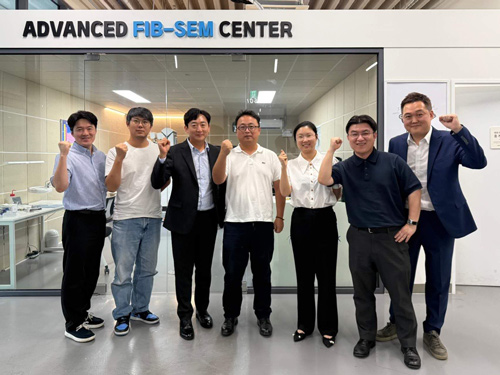
The DB550 combines high-resolution imaging with precise ion beam milling, enabling researchers to perform 3D reconstruction, cross-sectional analysis, and nanoscale material modification with efficiency and accuracy. With these capabilities, the system opens new possibilities for semiconductor analysis, materials science, and life science research.
Following installation, CIQTEK engineers provided hands-on training to the GSEM team, covering both standard workflows and advanced applications. The interactive sessions ensured that users gained practical experience in operating the instrument, from sample preparation to high-resolution imaging and data analysis. The enthusiasm and engagement of the GSEM team highlighted the strong potential for the DB550 to support diverse research projects at the center.
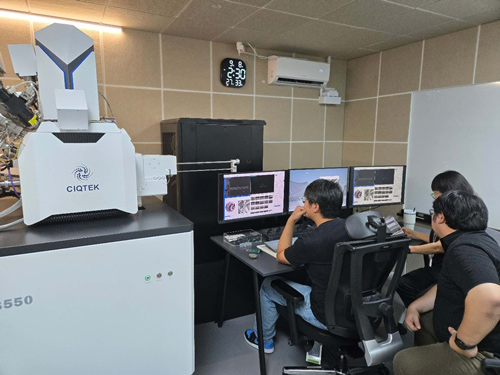
This collaboration reflects CIQTEK’s commitment to working closely with partners worldwide. By equipping GSEM’s facility with the DB550, we are not only strengthening our presence in the Korean market but also helping local researchers gain access to cutting-edge tools for scientific innovation.
We look forward to seeing the exciting results that GSEM’s Electron Microscope Center will achieve with the DB550, and we remain committed to providing ongoing technical support and collaboration.
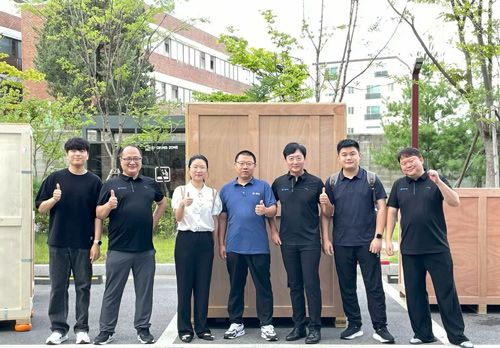
For adventure enthusiasts who demand both durability and functionality, the HT36 smartwatch delivers exceptional performance in any environment. Its robust construction features 6H hardened glass and 3ATM waterproof rating, making it equally suited for mountain trails and urban exploration. The brilliant 2.01-inch HD display remains perfectly visible even in direct sunlight, while the innovative rotating crown provides satisfying tactile feedback for effortless navigation through menus and features.
What truly sets the HT36 apart is its exceptional positioning capabilities. Supporting six global satellite systems including GPS, GLONASS, and Beidou, it maintains accurate tracking even in challenging urban canyons or remote wilderness areas. The built-in environmental sensors provide crucial real-time data including altitude, barometric pressure, and compass direction - essential information for any serious outdoor adventure. Beyond its navigation prowess, the watch offers comprehensive health monitoring with 24/7 heart rate tracking, blood oxygen measurement, and sleep quality analysis.
The massive 540mAh battery ensures weeks of typical usage between charges, while practical features like wireless calling, music control, and weather updates keep you connected wherever your adventures take you. With over 100 sports modes and a built-in flashlight for nighttime safety, the HT36 proves that you don't need to sacrifice functionality for durability in a outdoor smartwatch.
In the world of electronics, precision timing is a non-negotiable requirement for everything from microcontrollers to sophisticated communication systems. At the heart of this timing is the crystal oscillator, a component that provides a stable clock signal. While the terms "crystal" and "crystal oscillator" are sometimes used interchangeably, they are two distinct entities. Understanding this fundamental difference is the first step to appreciating the wide-ranging applications and performance demands placed on these essential components.
Simply put, a crystal is the passive component, while a crystal oscillator is the complete active electronic circuit.
The true significance of a crystal oscillator is not just its basic function but how its performance is tailored to specific, demanding applications, a contrast best seen in the world of unmanned aerial vehicles (UAVs).

The choice of a crystal oscillator is a critical design decision that perfectly illustrates the stark differences between civilian drones and military UAVs. While both require a timing reference, their operational environments and mission objectives lead to vastly different component requirements.
Civilian drones, used for activities like aerial photography, package delivery, or agricultural monitoring, typically operate in less extreme conditions. Their design prioritizes a balance of cost, size, and efficiency. The crystal oscillators used in these devices are often standard, cost-effective models. While they provide adequate frequency stability for flight control and data communication, they are not designed for extreme temperatures or intense electronic warfare. Their robustness is sufficient for consumer use, making them a practical choice for a high-volume market.
In contrast, military UAVs are mission-critical systems. They must operate flawlessly in hostile and unpredictable environments, where failure can have severe consequences. These aircraft are subject to high G-forces during maneuvers, extreme temperature variations, and intentional signal jamming. This demanding environment necessitates an entirely different class of oscillators. Military-grade systems often employ high-performance, specialized crystal oscillators designed to maintain their timing precision under the most challenging conditions.
The difference in application directly translates to the performance metrics of the oscillator.
This metric is the most important differentiator. It measures how constant the oscillator's output frequency remains over time and under varying conditions. For civilian drones, a basic level of frequency stability is enough for their navigation and communication protocols. For military UAVs, which rely on secure and precise data links and GPS for mission success, an oscillator with superior stability is essential. Military systems often utilize OCXO (Oven-Controlled Crystal Oscillators), which actively maintain the crystal at a constant temperature to achieve an exceptionally high level of long-term stability. While more expensive and power-hungry, the precision they provide is non-negotiable for mission-critical systems.
Temperature is a major factor that affects the performance of any oscillator. Both crystal and crystal oscillator devices are susceptible to frequency shifts due to thermal changes. In a civilian drone, a TCXO (Temperature-Compensated Crystal Oscillator) is a common upgrade that uses an integrated circuit to correct for temperature-induced frequency drift, offering a good balance of cost and performance. Military applications, however, face a much wider thermal range, from frigid altitudes to desert heat. The temperature stability of the oscillator is paramount. OCXOs provide superior environmental resilience by completely isolating the crystal from ambient temperature fluctuations, ensuring consistent performance regardless of external conditions.
In the digital age, electronic warfare is a serious threat. An oscillator's ability to resist external noise and interference is a key consideration. While a standard crystal oscillator is generally robust, it can still be affected by strong electromagnetic interference (EMI) or radio-frequency interference (RFI). Military-grade oscillators are designed with a focus on EMI immunity and enhanced shielding to protect the sensitive timing circuit from deliberate jamming or other electronic attacks. Their robust performance ensures that critical navigation and communication links remain functional even in a highly contested electromagnetic environment.
In summary, while a crystal and a crystal oscillator are fundamentally linked, it is the sophisticated engineering and application-specific design of the complete oscillator that truly matters. The choice between a consumer-grade oscillator and a military-grade one is a perfect example of how the environment and mission demands shape component selection, highlighting the crucial role of stability, resilience, and reliability in modern electronics.
In the rapidly growing renewable energy sector, ensuring grid stability is one of the biggest challenges. Solar and wind power, while sustainable, are inherently variable. Voltage fluctuations and harmonic distortions are common issues that can compromise both safety and efficiency of power transmission. This is where advanced solutions like Static Var Generators (SVG) and Active Harmonic Filters (AHF) come into play.
Imagine a renewable energy station in rural India. On a bright afternoon, Engineer Li monitors the control room screen and notices voltage spikes caused by fluctuating wind speed and irregular solar output. Such spikes, if left unchecked, could lead to line trips or equipment failures.
With a quick action, he activates the SVG system. Instantly, the device absorbs voltage fluctuations and stabilizes the grid. The waveform on the monitoring screen changes from erratic spikes to smooth curves, and the warning light turns green. This is the first step toward reliability.
But the challenge doesn’t end there. Renewable projects often face harmonic distortions generated by inverters and other electronic equipment. Left untreated, harmonics can reduce efficiency, overheat transformers, and shorten equipment lifespan. Engineer Li presses the AHF ON button. Immediately, the Total Harmonic Distortion (THD) levels drop, and the Power Factor (PF) improves. The grid becomes not only stable but also more efficient.
By combining SVG and AHF, renewable projects can achieve a balanced, optimized performance. Voltage stability ensures that transmission lines remain safe, while harmonic filtering protects equipment and extends its lifespan. For project owners and EPCs, this means fewer interruptions, lower maintenance costs, and better overall ROI.
In today’s industrial landscape, reliable grid integration is not optional—it’s essential. SVG and AHF together make renewable energy projects future-ready, ensuring that clean energy is also stable, efficient, and sustainable.

The 10th EFEPR Summer School, held at the University of Manchester, welcomed over 130 young researchers and established experts from across Europe for an inspiring week of lectures, tutorials, and hands-on sessions. CIQTEK, together with our UK partner SciMed, was proud to be part of this vibrant event dedicated to advancing Electron Paramagnetic Resonance (EPR) science.

At our booth, we presented the CIQTEK EPR200M benchtop spectrometer, a compact yet powerful platform designed for teaching labs, research groups, and emerging facilities. Many participants were excited to see how the instrument combines high performance with accessibility, sparking conversations about applications ranging from free radical studies to transition metal analysis.
But science wasn’t the only highlight. To bring extra warmth to the event, we introduced our CIQTEK panda mascot—a plush companion that quickly became a favorite among attendees. The panda added a touch of fun, helping students relax and encouraging more open and engaging discussions. It was a great reminder that science can be both rigorous and joyful.
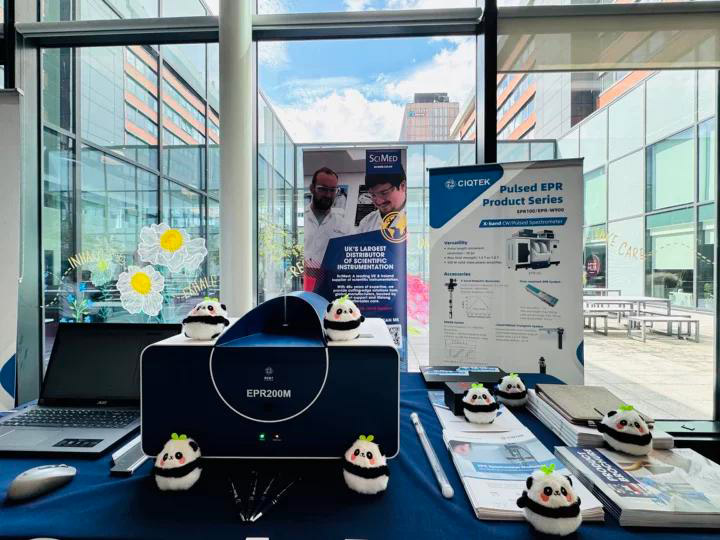
Throughout the week, our team enjoyed deep discussions on topics such as variable temperature experiments, modernization of legacy EPR systems, and the role of benchtop instruments in expanding access to EPR education. These exchanges reinforced our commitment to supporting both established laboratories and the next generation of researchers.
A special thank you goes to our distributor SciMed for their strong support and collaboration throughout the event. Their expertise and enthusiasm helped create an inviting space where participants could explore new ideas and connect with the latest in EPR instrumentation.
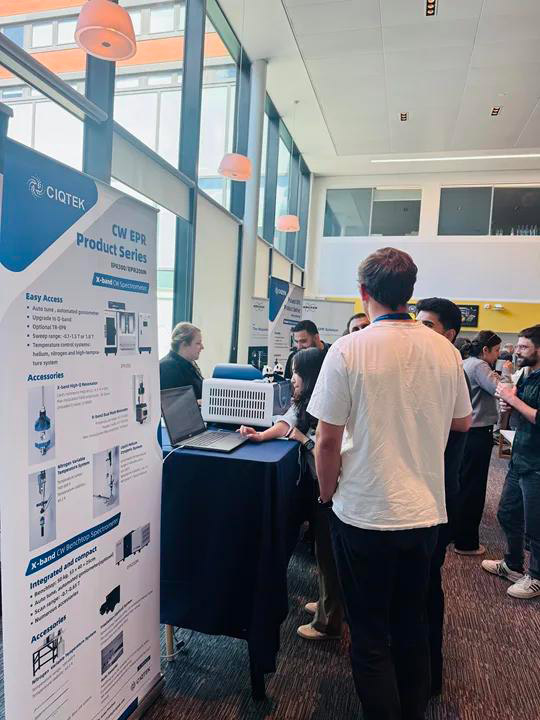
We leave Manchester energized by the passion of the EFEPR community and look forward to continuing our contributions to global EPR education and research.
From August 24–29, 2025, CIQTEK participated in the Microscopy Conference 2025 (MC2025) held in Karlsruhe, Germany, one of Europe’s largest and most influential events in the field of electron microscopy. The conference attracted leading scientists, instrument developers, and industrial users, creating a dynamic platform for academic exchange and technological collaboration.
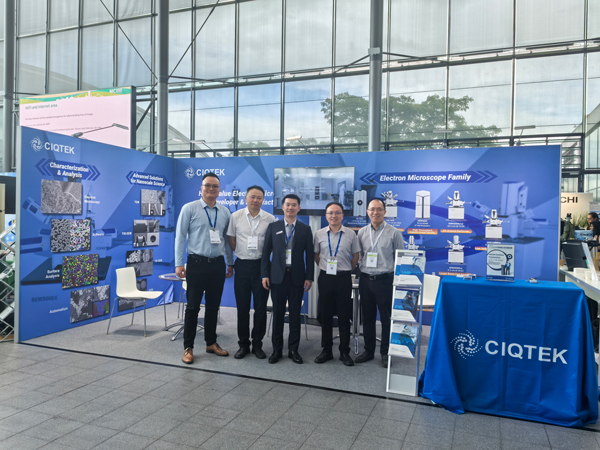
As part of the program, CIQTEK delivered an Exhibitor Presentation titled:
“Unlocking the Power of High-Speed Scanning Electron Microscopy — without Compromising Superb Imaging Resolution at Low kV.”
The presentation highlighted CIQTEK’s approach to enabling high-throughput SEM imaging while maintaining exceptional resolution at low accelerating voltages—a balance critical for applications in materials science, semiconductor failure analysis, and life sciences research. The talk generated considerable interest among attendees and sparked lively discussions about how advanced SEM systems can accelerate both fundamental research and industrial applications.

Beyond the presentation, the CIQTEK team actively engaged with researchers and industry professionals, sharing insights into the company’s broader electron microscopy portfolio and exploring opportunities for collaboration. These exchanges not only deepened awareness of CIQTEK’s technological strengths but also strengthened connections within the global microscopy community.
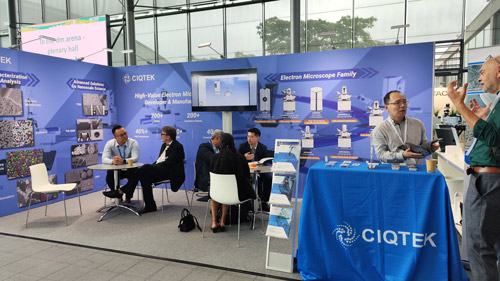
CIQTEK’s successful participation in MC2025 reflects its ongoing mission to push the boundaries of EM imaging technology and to provide researchers worldwide with powerful, accessible, and innovative solutions. Looking ahead, the company will continue to expand international partnerships and contribute to the advancement of microscopy-driven discovery.
In today’s fast-paced world, a smartwatch is more than just a timepiece—it’s a personal assistant, fitness companion, and style statement all in one. The North Edge HT30 redefines what a smartwatch can be, combining cutting-edge technology with premium craftsmanship. The large HD round display delivers a stunning visual experience, making notifications, fitness data, and apps easy to read at a glance. Housed in a lightweight yet durable titanium alloy case, the HT30 offers both elegance and resilience, suitable for every lifestyle.
Performance is at the heart of the HT30. Equipped with a 600mAh battery and a precision motion algorithm, it ensures uninterrupted tracking of health and fitness activities. The watch supports over 100 professional sports modes and features a built-in health monitoring chip, allowing you to track heart rate, sleep, and other vital stats with ease.
For outdoor enthusiasts, the HT30 is a game-changer. With IP68 waterproofing, a compass, floodlight, SOS, and purple light identification lamp, you can explore confidently day or night, whether hiking, sailing, or swimming. Customization is another highlight, as users can choose from a variety of dial themes and strap colors, ensuring the watch matches personal style and occasions.
Whether you’re seeking adventure, fitness tracking, or simply a smart companion that keeps you connected, the North Edge HT30 delivers. With its powerful features and premium design, it’s more than a smartwatch—it’s a lifestyle upgrade.
EPR spectrometers are crucial tools for many research labs, but upgrading them can feel like a big financial burden. The good news is that modernizing your EPR system doesn’t have to drain your budget.
With CIQTEK EPR Spectrometer Modernization & Upgrade services, you can enhance your system’s performance while keeping costs low. Whether you're dealing with outdated temperature control, slow data processing, or low-resolution probes, there are ways to upgrade your system cost-effectively.
Before jumping into an upgrade, take some time to assess your system’s performance. What’s causing delays or poor data quality? Some of the most common pain points in older EPR systems include:
Inconsistent temperature control: If your VT system isn’t performing as expected, it can throw off your experiments.
Slow data processing: Outdated hardware or software can slow down your workflow, affecting the overall efficiency of your research.
Low-resolution probes: If your probes are outdated, you could be losing valuable data precision.
By pinpointing these weaknesses, you can prioritize upgrades that will bring the most immediate benefits to your research.
Instead of overhauling your entire system, modular upgrades allow you to focus on specific components that need improvement. This way, you’re not paying for an entire new system, just the parts that will truly make a difference. Here are some areas where you can make upgrades that will improve your system's performance:
VT System: If your current temperature control system is outdated or malfunctioning, upgrading it can make a world of difference. CIQTEK’s Liquid Nitrogen VT System is a cost-effective way to enhance your temperature control, offering more stability and precision for sensitive experiments. Plus, it’s compatible with many legacy EPR systems, so you don’t need to replace your entire setup.
Data Acquisition System: An old data acquisition system can be a major bottleneck. Upgrading to newer hardware and software can significantly speed up your data processing, helping you get results faster and more efficiently.
Probes and Sensors: If your probes aren’t cutting it, upgrading to higher-resolution models will improve the quality and sensitivity of your measurements. These upgrades are relatively low-cost but can provide a noticeable improvement in your results.
By focusing on the key areas that need attention, you can give your system a major performance boost without spending a fortune.
One of the most cost-effective ways to upgrade is to retain the core components of your system, like the magnet and electronics, and only replace the parts that are no longer functioning well. Many modern upgrades are designed to work seamlessly with older systems, allowing you to extend the life of your existing equipment while still achieving improved performance. For instance:
Software Upgrades: CIQTEK EPR control software can integrate with older hardware, giving you the latest features and improved data processing capabilities without replacing your entire system.
Hardware Compatibility: Whether it’s the VT system, probes, or other components, CIQTEK’s modular upgrades are designed to work with a wide range of legacy systems, so you don’t need to worry about replacing everything at once.
By focusing on compatible components, you can save money while still getting the performance boost you need.
Upgrading your system doesn’t have to be a huge upfront expense. Here are a few strategies to help manage the cost:
Phased Upgrades: You don’t need to do everything at once. Start with the components that will give you the biggest improvement, such as upgrading the VT system or adding a new probe. Gradually upgrading one component at a time can help you spread out the costs.
Financing Options: Many suppliers, including CIQTEK, offer flexible financing plans that make it easier to budget for upgrades over time. This can help you get the upgrades you need without straining your research funds.
Custom Solutions: Every lab has different needs and priorities, and CIQTEK offers tailored solutions that fit both your system’s requirements and your budget. Whether you’re upgrading a few components or making more substantial changes, we can help you build a cost-effective upgrade plan that suits your needs.
Upgrading your EPR system doesn’t have to mean a huge investment. By taking a targeted, modular approach and focusing on the areas that will most improve your system’s performance, you can modernize your setup while staying within budget. With CIQTEK EPR Spectrometer Modernization & Upgrade solutions, you can enhance your system’s capabilities without the financial strain of a full overhaul.
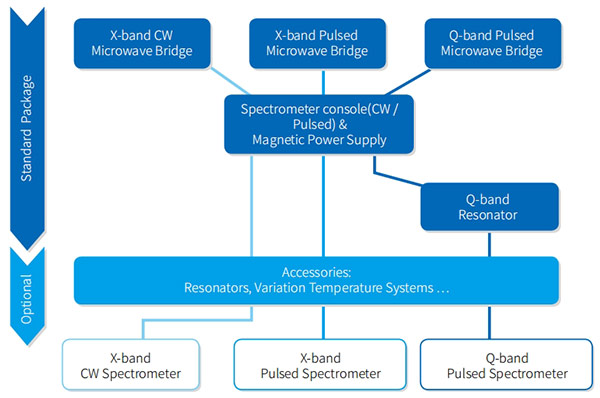
If you’re ready to explore how we can help you modernize your EPR system affordably, reach out to us for a consultation. Let’s find the right upgrade path for your lab’s needs and budget.